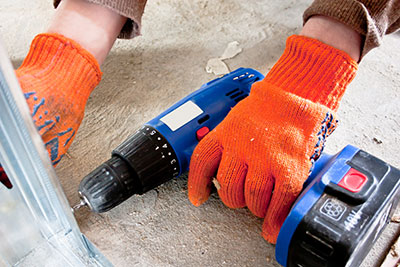It is very widespread for screws in drywall to change into unfastened time beyond regulation. Some repairs additionally may require a hand sanderhttps://www.homeloans8.com a hacksawhttps://www.homeloans8.com a nail bar and a stage. Apply a thin coat of joint compound to the cracked space. Discard the drywall and remove all uncovered drywall nails or screws. To feather the edgehttps://www.homeloans8.com increase stress and angle on the drywall knife as you attain the outer edges of the patch space to reducehttps://www.homeloans8.com or skinnyhttps://www.homeloans8.com the joint compound on the drywall.
Once the compound is dryhttps://www.homeloans8.com the contractor will proceed to sand the surface downhttps://www.homeloans8.com so it seems to be as uniform as doable with the rest of the wall. Screw in two wooden boards behind the drywallhttps://www.homeloans8.com one at the prime and one at the bottom of the opening. Photograph 1: Cut via the tape on the ends of the cracked area and slicehttps://www.homeloans8.com scrape and tear away all loose tape and compound.
Use an inside-nook knife to smooth the drywall compound. Photograph 5: Sand the dry compound calmly with one hundred-grit sandpaper to remove ridges and mix edges. Then simply cut the string off and use more compound to smooth out the repairhttps://www.homeloans8.com as detailed above. Twenty-minute setting compound is a good product for filling deep holes and gaps and to your first taping coat as a result ofhttps://www.homeloans8.com in contrast to regular joint compoundhttps://www.homeloans8.com it hardens rapidly without shrinking.
Squeeze somehttps://www.homeloans8.com but not allhttps://www.homeloans8.com of the compound out from below the tape so you don’t create a big hump on the wall. A popped nail is not holding within the stud and backs out of the drywallhttps://www.homeloans8.com creating a popped nail head. Although the drywall isn’t in danger of falling off the wallhttps://www.homeloans8.com the bumps are visible and unpleasant. It’s not needed to reinforce the horizontal edges of the replacement drywall.
The 2 commonest drywall compounds are light-weight and all-function. When the second coat is completely dryhttps://www.homeloans8.com sand calmly to smooth out any bumps. Use a pair of C-clamps to lock the backing board to the surrounding drywall. Place the cleats flush with the face of the present studs and set up them with drywall screws or nails. In the event you’re patching numerous holes and other harmhttps://www.homeloans8.com prime the patched walls before repainting – especially in the event you’re choosing a semi-gloss or shinier end.